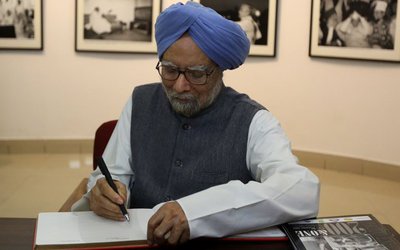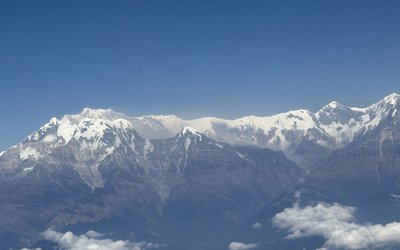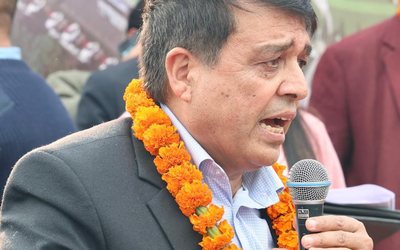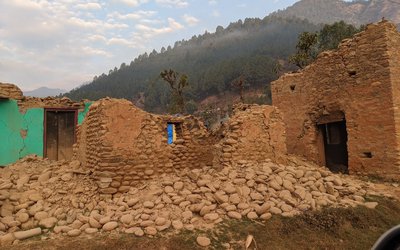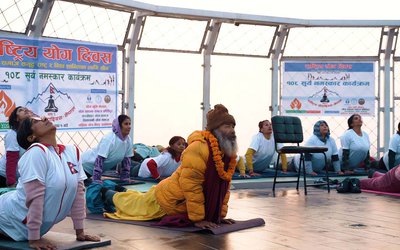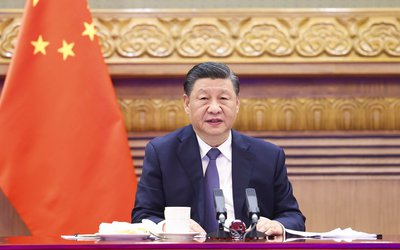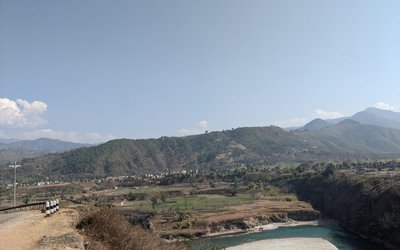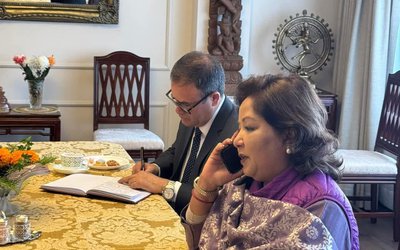
Nepal has practiced project-level Environmental Assessment (EA, Initial Environmental Examination, IEE or Environmental Impact Assessment, EIA) since the mid-1980s. The EA is mandatory for the prescribed projects after the enforcement of the Environment Protection Act (EPA, 1996) and Environment Protection Rules (EPR, 1977). Number of IEE or EIA reports of the prescribed projects has been approved legally to provide 'environmental clearance' for project implementation. The proponents have made several commitments in the EA reports, including effective implementation of the environment protection measures (EPMs) and 'voluntary' monitoring. The proponents have further legal commitments to mitigate project-induced adverse impacts on physical, chemical, biological, social, economic and cultural aspects of the environment with allocation of necessary budget and human resources.
A recent field study of four hydro-electricity projects (HEPs), located between Birethanti and Doubilla, in the Modi Khola has confirmed that EPMs of the approved 'EA reports' have not been implemented to mitigate adverse environmental impacts to the extent required. The construction contractor(s) consider that EPMs and environment management plan (EMP) should have been in detail design. The contractor(s) are responsible to construct structures such as intake/headwork or tunnel or open canal or powerhouse or protection walls as per the design. Based on discussions, contractors were unaware of the environmental requirements (both EPMs and EMP, which are integral parts of IEE/EIA) that need implementation and compliance. It indicates that 'once EA report is approved, environment is automatically managed', with no need to implement measures included in the legally-binding IEE/EIA reports.
In Modi Khola basin, private sector has operated Upper, Middle, Lower Modi and Lower Modi-A (United Modi) and NEA has implemented Modi HEP. The Modi HEP has prepared EIA report (in 1996) before the enforcement of the EPA and EPR in June 1997. Other projects have complied with EPA and EPR to get 'environmental clearance'.

Projects have financially supported local communities to construct village road, school building and drinking water supply or create public awareness. Projects have compensated the project-affected families for land and property acquisition, including lost resources as a part of site clearance, and 'blasting-induced' house damages or cracks. Project-induced environmental impacts such as drying of water sources, seepage or change in water flow from stream to tunnel outlet, disposal of tunnel 'muck' and site rehabilitation, impacts on fish species and their population, 'ghat' (cemeteries) development, and compensatory plantation are yet to be attended. In the operational stage, officials working in and around the power generation site urgently need ear plug, noise attenuation measures, or sound-proof cabinet to minimise 'hearing ability'.
Long stretch of the Modi Khola is 'dewatered' and this reduces opportunities to maintain and/or improve aquatic habitat, in particular of fish species. The proponents have made number of commitments through EIA report, in the form of mitigation measures, such as release of 'environmental flow' (10% of the total flow), construction of 'fish ladder' for upstream-downstream movement of fish species, early warning system to reduce casualties in the dewatered zone due to sudden release of water from headwork and so on. Two projects have constructed 'fish ladder'. However their location and design are inappropriate. This compliance is 'ineffective' and indicates for no investment in future similar projects having long section of 'dewatered zone'.
The Modi Khola was a good habitat for 'asala' fish and was rich in fish diversity and productivity. Local people in Ambot (with few hotels offering fish dishes) informed that only one-tenth of the fish quantity is produced as compared to few years back. Hoteliers are trying to meet the fish demand by purchasing fish from Thado Khola or Kali Gandaki river. 'Fish lovers' would not find required 'fish to eat' from the Modi Khola which experiences 'complete dewatered zone' (except for about 500m in four projects) from Birethanti to Doubilla.
The water diverted from Modi Khola in Birethanti will generate 15.1 MW (installed capacity) in the Middle Modi HEP and this water will be diverted to generate 14.8 MW in the Modi HEP. Water released from powerhouse at Dimuwa will be diverted to generate 20 MW in the Lower Modi HEP. The released water will be diverted in the 'open canal' to generate 10MW in the United Modi HEP. It means, dewatered zone is devoid of fish species from Birethanti to powerhouse site of the Lower Modi-A HEP in the winter and dry seasons.

High content of sand particles in the Modi Khola, geological fragility and inadequate conservation of its watershed has accelerated damage to turbine and has perennially increased maintenance cost.
The EA, introduced as a planning tool for ensuring people-centred environment-friendly development in early 1970s, has been used by almost all countries in identifying, predicting and evaluating environmental impacts of the proposals and selecting measures for avoiding, mitigating and compensating adverse impacts and enhancing beneficial impacts. It is carried out at project, strategic, sectoral or thematic levels to attain the goals of sustainable development. This tool is also extensively used by the donor communities and the multilateral agencies such as the World Bank and other regional Banks to make the development policies, plans, programmes and projects environment-friendly and sustainable.
This short field-visit calls to understand the benefits of EA tool, and prioritise development projects that require different types of assessments. In the cascade HEPs, it might be useful to carry out 'beyond project-level assessment'. Many countries have practiced project- and strategic levels of assessments to address environmental impacts. Sector level and cumulative assessments are equally important to reduce project-level assessments.
The new Environmental Protection Bill (2075) has included brief environmental study, IEE, EIA, supplementary EIA and Strategic Environmental Analysis (widely used terminology is Strategic Environmental Assessment). Other assessment tools should also be opened in the new Bill. The Bill trusts the proponent for environmental scoping, and auditing as well. In principle, scoping and ToR preparation, monitoring and auditing should belong to the competent authority. Implementation of EPMs or EMP for all project-induced impacts is the responsibility of the proponent. The situation in Modi Khola is different and contractors are unaware on mitigating project-generated adverse environmental impacts. Understanding about the usefulness of EA significantly differs between Singhdurbar and field levels. The EA is a comprehensive tool and additional effort is required to help understand its benefits at the implementation level.

Batu Uprety
Former Joint-Secretary and Chief of Climate Change Management Division, Ministry of Environment (then), and former Team Leader, National Adaptation Plan (NAP) formulation process. E-mail: upretybk@gmail.com
- Damaging The Functional EIA Track
- Dec 22, 2024
- Baku CoP29 Outcomes And Nepal's Initiatives
- Nov 26, 2024
- Recalling the Initiatives for Baku Climate Conference
- Oct 24, 2024
- Two Decades Of Journey On Carbon Trade
- Sep 01, 2024
- Improvement Of EIA Report: Need For A Clarity
- Aug 11, 2024
